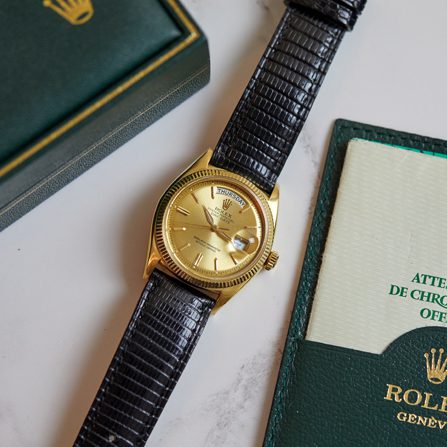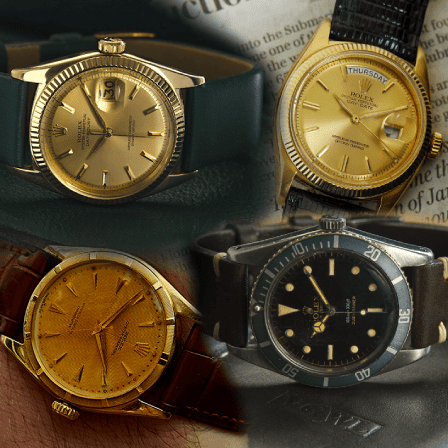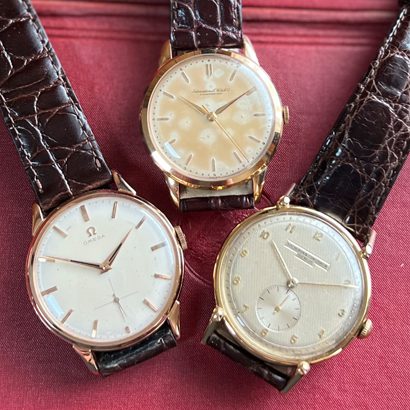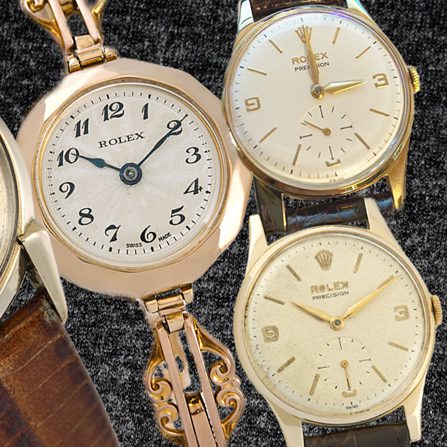WHAT IS A
FRANKENSTEIN WATCH?
The terms Frankenstein watch or Frankenwatch are commonly used when discussing the authenticity of vintage watches. There needs to be more clarity as to what a Frankenwatch really is. This article will explain what is a Frankenstein watch, describe the implications of Frankenwatches, and show you how to avoid them.
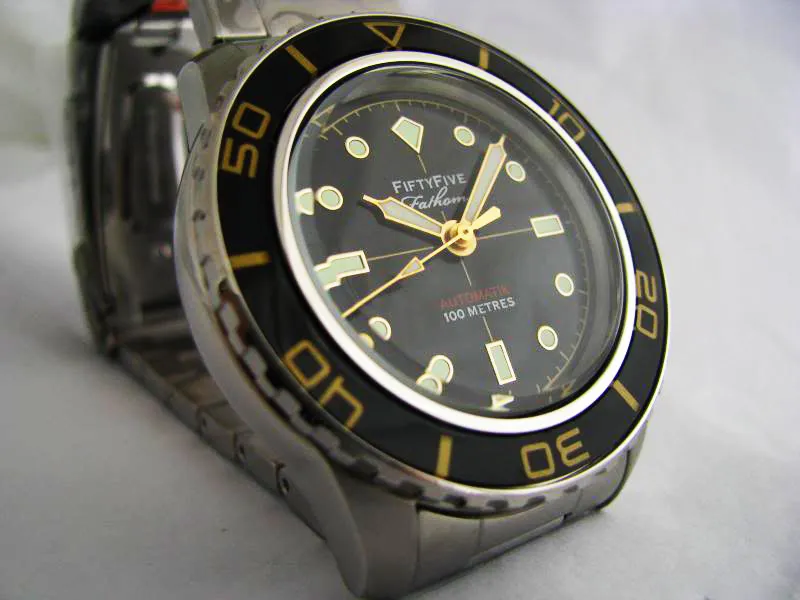
Why a Frankenstein?
Mary Shelley’s 1818 novel ‘Frankenstein’ tells the story of a young scientist, Victor Frankenstein, who creates a sentient creature from old body parts. Similarly, a Frankenstein watch, or Frankenwatch, is built from the parts of two or more other watches.
The Definition of a Frankenstein Watch or Frankenwatch
The term Frankenwatch is seen to have negative connotations, so it is a good idea to define what a Frankenwatch is not.
- Modified watches (Modding)
Once you have bought a watch, it is your property and you can do what you like with it. A large community within the vintage watch world enjoys customising their watches with new dials, hands, bezels, etc. They usually choose affordable brands, such as Seiko, but the addition of after-market parts extends to watches worth thousands of pounds, including Rolex and Patek Philippe. Because these are watches modified with specially designed parts rather than those taken from another watch, these are usually referred to as customised watches as opposed to Frankenstein watches.
- Project watches
One step on from customising a watch you have bought is to build one from scratch. The internet is full of suppliers who will sell you all the necessary parts to build a watch to your specifications. These are not seen as Frankenwatches any more than a new watch from an established brand that outsources the manufacture of their parts.
- Serviced or restored watches
A watch is a time-telling tool to be used, often daily, and sometimes in harsh conditions. To maintain its functionality and appearance, it is necessary to replace worn-out parts. The replacement of parts during service or restoration, while compromising the watch’s originality, should not be seen as reducing the authenticity as long as the correct manufacturer’s parts are used. A 1950s watch sent for service will have 2020 parts put into it. This does not create a Frankenwatch.
Most experts agree that the defining point of a Frankenstein watch or Franken watch is its creation with the intent to deceive. The common thread between a wildly customised Seiko and a recently serviced Rolex is that the additions to the watch are fully disclosed. A potential purchaser has all the information necessary to make an informed decision. A Frankenwatch is trying to be something it is not, to fool and defraud a buyer; it is the real monster.

Are Recased Watches Frankenstein Watches?
It is worth taking a moment to look at recased watches. These are typically pocket watch movements, complete with dial and hands, that are given a new lease of life by being housed in a modern wristwatch case. In many ways, this is a noble endeavour, saving beautiful craftsmanship and finding ways to adapt it to modern usage. However, they will never be as valuable or collectable as an all-original watch.
The sellers of such watches are pretty open about the watch’s origins and the mismatch between the inside and outside. Problems arise when the dial is not original and has been recreated to mislead the buyer as to the true nature of the watch. It may pretend to be military-issue or heavily skeletonised and ornamented in a way the original manufacturer never intended. Experts would agree that these cross the line into becoming Frankenwatches.
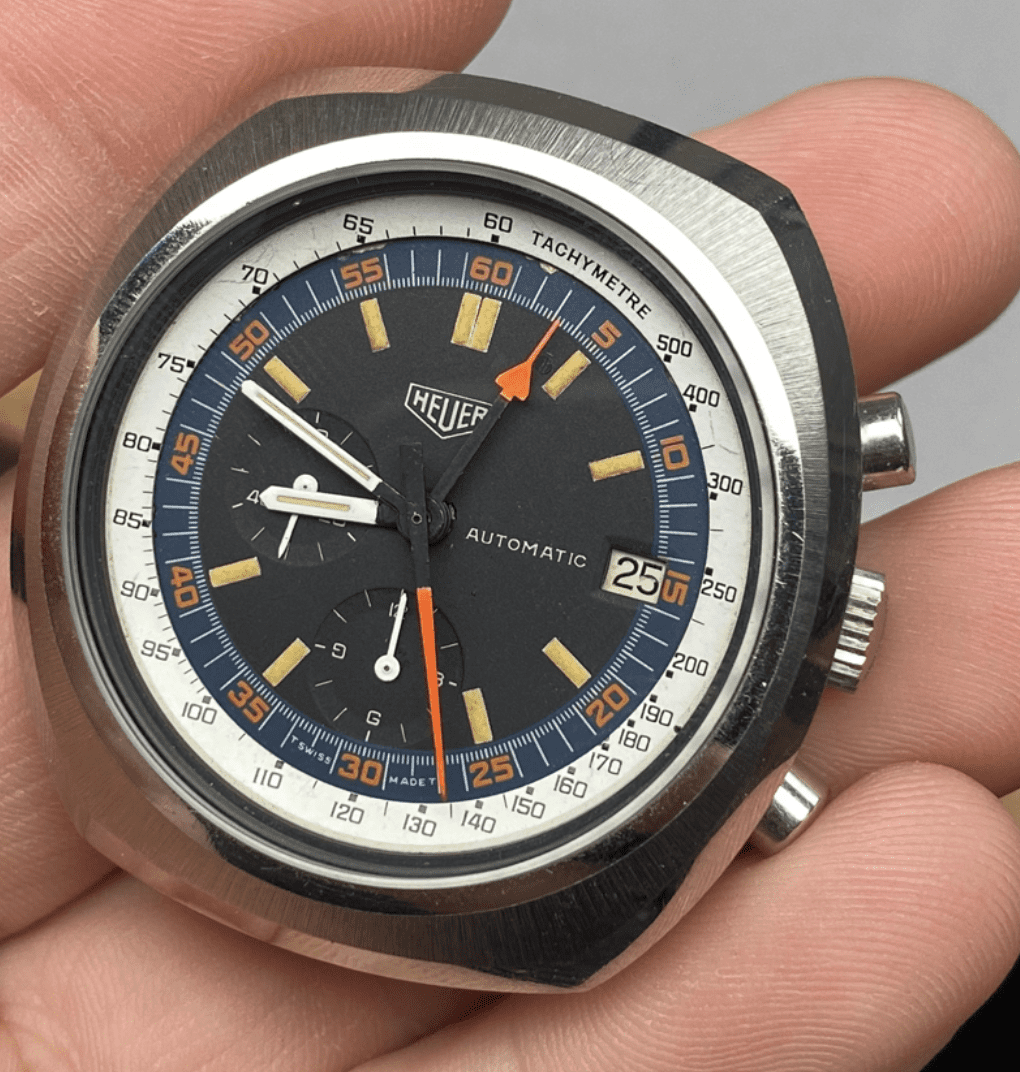
Why are Frankenstein Watches a Problem?
When a collector buys a watch, particularly a vintage watch, they are looking to own an accurate representation of the chosen brand’s history and artistry, not something cobbled together to look like it. At its core, a Frankenstein watch is dishonest, and in the watch world, where hard facts on historic watch production are hard to come by, dishonesty is not acceptable.
At the lower end of the market, a Frankenstein watch may represent a watch that never existed. An assemblage of parts that seeks to cash in on the demand for a watch brand’s vintage output while at the same time exploiting the gaps in collectors’ knowledge.
At the higher end, elaborately crafted backstories can turn a Frankenwatch into a newly discovered missing link in the history of a watch model’s evolution, especially if the brand refuses to comment on its past production. For collectors, watch condition is everything. Creating a perfectly preserved example of a rare, sought-after model by building it from parts can dupe auction house experts and bidders alike. These circumstances have arisen in recent years, and the sums of money involved run into the millions of pounds.
Many Frankenwatches exist because of the cross-over in the use of movements between brands. The Valjoux 72 movement is a commonly used hand-wound vintage chronograph movement. It can be found in brands from Invicta to Rolex. The Invicta is worth around £200, while the Rolex is £20,000 or more. The temptation to change the engraving on the movement and repaint the dial is clear.
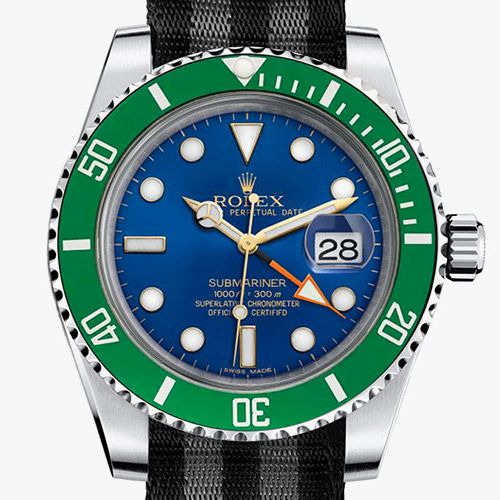
How Can You Protect Yourself From Franken Watches?
As with most watch-collecting issues, knowledge is critical. Once you know what a Frankenwatch is, you can be primed to look out for them.
- Thoroughly research any watch that you are interested in. If nothing precisely like it is pictured online, that is a red flag. Yours may be ultra-rare, but more likely, it was never made in that configuration initially.
- Get to know the design language of your favoured brands. Watches produced around the same era will share common features. Once you understand what details a brand uses, anomalies will stand out. As for fake watches, look for misaligned printing on dials or engraving on cases and movements. Be suspicious if any part of the movement looks shinier than others, especially if that part carries branding.
- If your watch carries a model number on the case or the paperwork, check which watch that number relates to and that yours is identical.
- Expensive watches should be treated with utmost caution, especially if they appear to be scarce examples. It is worthwhile for a fraudster to spend thousands of pounds to build a perfect replica of a watch that might potentially be worth millions. Check the serial number against auction archives. Has this watch ever been sold before? If so, what did it look like?
The kind of knowledge that you need to detect the most sophisticated Frankenwatches takes years to accumulate, with the personal handling of hundreds, if not thousands, of watches. For this reason, it is best to put yourself in the hands of experts. Vintage Gold Watches offers a Lifetime Authenticity Guarantee to ensure that the watch you buy is as the manufacturer intended.
Be Aware, Not Afraid
Frankenstein watches, or Frankenwatches, are a problem for the watch-collecting community, but thankfully, they are relatively rare. Not all Frankenwatches are created with malicious intent.
In previous decades, collectors were not as particular about details or as knowledgeable as they are today. Watches were made to run with whatever came to hand, even if that meant swapping in a movement from another brand altogether. If you have concerns about Frankenwatches, talk to the experts at Vintage Gold Watches.
Sign up for our regular newsletter to learn more about vintage watch collecting.

